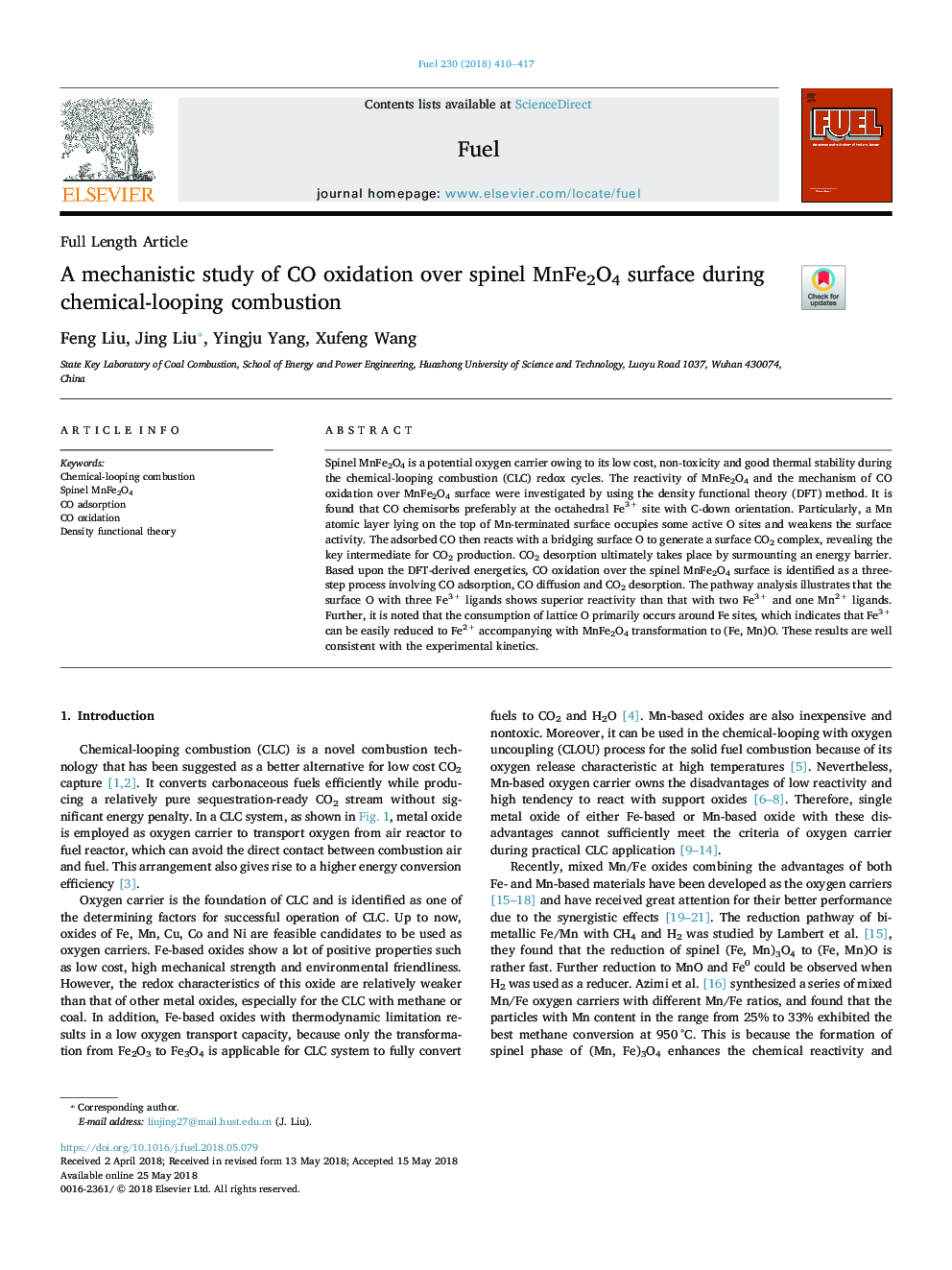| Article ID | Journal | Published Year | Pages | File Type |
|---|---|---|---|---|
| 6630652 | Fuel | 2018 | 8 Pages |
Abstract
Spinel MnFe2O4 is a potential oxygen carrier owing to its low cost, non-toxicity and good thermal stability during the chemical-looping combustion (CLC) redox cycles. The reactivity of MnFe2O4 and the mechanism of CO oxidation over MnFe2O4 surface were investigated by using the density functional theory (DFT) method. It is found that CO chemisorbs preferably at the octahedral Fe3+ site with C-down orientation. Particularly, a Mn atomic layer lying on the top of Mn-terminated surface occupies some active O sites and weakens the surface activity. The adsorbed CO then reacts with a bridging surface O to generate a surface CO2 complex, revealing the key intermediate for CO2 production. CO2 desorption ultimately takes place by surmounting an energy barrier. Based upon the DFT-derived energetics, CO oxidation over the spinel MnFe2O4 surface is identified as a three-step process involving CO adsorption, CO diffusion and CO2 desorption. The pathway analysis illustrates that the surface O with three Fe3+ ligands shows superior reactivity than that with two Fe3+ and one Mn2+ ligands. Further, it is noted that the consumption of lattice O primarily occurs around Fe sites, which indicates that Fe3+ can be easily reduced to Fe2+ accompanying with MnFe2O4 transformation to (Fe, Mn)O. These results are well consistent with the experimental kinetics.
Related Topics
Physical Sciences and Engineering
Chemical Engineering
Chemical Engineering (General)
Authors
Feng Liu, Jing Liu, Yingju Yang, Xufeng Wang,
